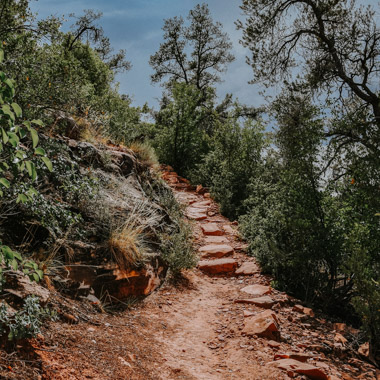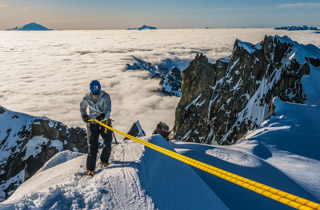Allow Sufficient Training Time
Allow Sufficient Training Time
Get Started Today for Success Tomorrow
If you haven’t been hiking for several months but want to prepare for a multi-day backpacking trip, can you get ready in four weeks? Possibly, but your body may not be very happy. Tendons, ligaments, tissues, joints, and muscles all need time to adapt to exercise. To avoid the common “too much, too fast” issues ranging from pulls and strains to bursitis, tendonitis, or illness, allow sufficient training time to prepare for your summer goals.


Timing Your Training
Give yourself more training time than you think you’ll need so that when unexpected issues come up, you have a cushion. In addition to the physical training, consider your family commitments, work obligations, and any inclement weather that may alter your training plans. By building in an extra month or two, you have more flexibility for when you complete your hikes. You also have time to test out new gear and replace anything that doesn’t work.
The bigger your objective, the more time you should allow for training. Someone who wants to hike 12 miles in a day, gaining 2000 feet while carrying a 20-pound pack, might only need to train for two months. Someone targeting a more skilled challenge, such as a three-day climb of Mount Rainier while carrying a 40-pound pack, may need to train for four to six months. And someone aspiring to do a multi-week outing like Everest, Denali, or a thru-hike of the PCT might need to train for nine to twelve months.
Developing A Suitable Plan
To develop an appropriate training plan, start by assessing your current level of fitness against what you will need to achieve your goal. First, consider where your cardiovascular stamina should be. This means understanding how many days you will hike without a break, what mileage you want to hike on your longest day, how much elevation you will gain, and what your pack weight will be. It also includes understanding your ability to recover.
After you assess your cardiovascular capacity, consider what your maximum pack weight will be. Think about the wide variety of tasks you’ll be doing, which might include crossing loose scree or talus slopes, going over and under downed logs, self-arresting on icy slopes, building protective snow walls, or hoisting heavy gear. This will suggest what level of strength you need and what areas are most vulnerable.
Finally, reflect on how much balance and flexibility you will need and what technical skills you want to acquire. Armed with all that knowledge, you are ready to prioritize your training to minimize any gaps in ability. Develop a plan that includes all aspects of fitness, emphasizing areas you perceive as your greatest weaknesses.
By giving yourself enough training time to get ready for your goals, you’ll be able to enjoy your trip rather than simply endure it.






